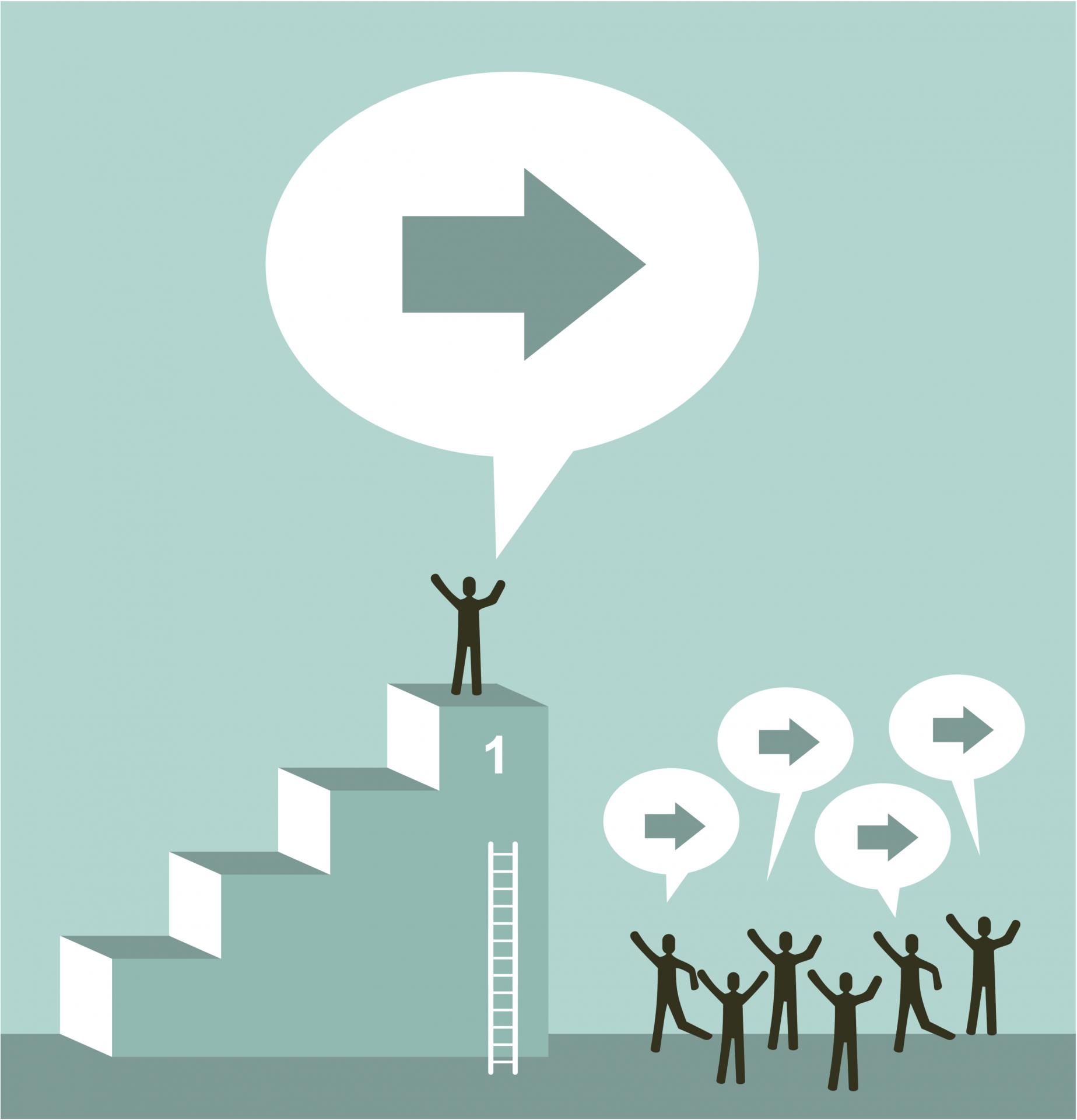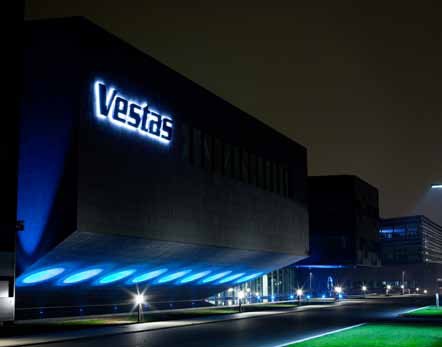The word ‘innovation’ is a much-used term, especially in relation to growth strategies for corporations, and even nations, today. The process of developing and transforming ideas into valued propositions for customers who are willing to pay for them is somewhat elusive, even to the most seasoned corporate. To a Danish technology company like Vestas Wind Systems, which is constantly pushing the boundaries of applied science and engineering, innovation is the company’s lifeblood. It is the driving force that has propelled the evolution of Vestas’ wind turbine generators over the last 25 years.
The company’s first wind turbine generator product, called the V10, was made from parts of a tractor. Today, the torque generated in our V90, V100 and V112 products rival that found in the largest container-shipping vessels. The latest V164 offshore product stands at a height of 125 metres above sea level, has a rotor swept area of 21,127 square metres, and is capable of producing six megawatts of electric power hourly —enough electricity to power over 6,000 typical American homes. Without innovation, these products would not be possible.
The renewable energy industry is growing explosively. Between 2009 and 2010, approximately 100 new Chinese wind turbine manufacturers emerged (at one point, there were a mere 20 such companies worldwide). This sudden increase in the number of industry players created high demand for both leadership as well as technicians. As a company that, too, has experienced high growth, Vestas has ventured beyond its native shores in search of a solution to sustain our expansion.
By building a global footprint, Vestas has been able to leverage from industries such as aerospace, shipbuilding and automobiles. Within five years, Vestas successfully launched research and development (R&D) centres in Singapore, Chennai, Boston, Houston and Beijing. Today, more than 50% of the company’s R&D activities are executed outside of Denmark. Singapore was the first of such centres outside Europe, and the facility now houses 130 scientists of 17 different nationalities. There were many challenges to face in leveraging our global diversity, and many insights were gained. Below are a few of the most salient ones.
Building virtual trust
On one hand, a global footprint enables companies to hire the best talents and competencies from around the world. On the other, it often stands in the way of spontaneous activities. In the case of Vestas, it made capturing and building on the ‘eureka’ moments necessary to R&D extremely difficult.
Vestas recognised some time ago that there was a need to build a safe and trusting working environment for the entire global team, as impromptu discussions that allow like-minded innovators to debate and discuss are critical to the whole ideation process. Eventually, the company turned to the Internet chat tool, Microsoft Communicator, using this to share and debate about our ideas. However, the idea of using the Internet to talk to colleagues from all corners of the world, did not come as naturally as ‘corridor chat’ at first, and took time for employees to embrace fully.
Vestas’ Project Alpha, a programme that focused on increasing the capacity of turbines to capture wind energy, proved to be a fine example of how the company overcame the creative challenges associated with housing a global workforce. In this situation, the project manager had to manage a virtual team spanning the United Kingdom, Denmark and Singapore. One of the first tasks was to integrate the different groups by means of team-building exercises, which set the tone for over three years of close collaboration on the programme. The project was a huge success and, by means of using virtual technology, contributed to many ‘eureka’ moments.

Courtesy of Thinkstock
Importance of shared mission
Having clearly defined roles and responsibilities are insufficient; stakeholders must share a single goal or mission. One of us in Singapore used to feel it was crucial that teams in the different locations have clear and specific responsibilities to allow them to work speedily and independently. In reality, being able to define clearly and specifically requirements before the start of a project is a luxury one rarely has in global research. The main challenge, we found, came when the teams had to integrate their solutions afterwards. We then realised the specifications, requirements and direction will evolve as one navigates uncharted territory. This is especially true when working on a breakthrough form of innovation.
As with most research projects, constant development and changes tend to increase workload, which, in turn, calls for lots of passion, patience and tenacity in order to meet time limitations. Having a common goal helped pull the entire team through bottlenecks. During the critical integration phase of the project, the Singapore team volunteered to support a software control modification. On another occasion, the Danish team provided support in a hardware installation retrofit crucial to the success of an experiment that was to be conducted.
In both situations, seamless cooperation helped keep the project to its datelines. The teams tackled the challenges with a single mindset: to realise the proof of the concept that they all believed was a radical but game-changing innovation. Today, Project Alpha has successfully proven the feasibility of this radical concept, and provided the springboard for Vestas to pursue the technology development phase.
Team spirit proved to be pivotal to the success of the project. With the challenge of changes and new issues popping up constantly, any team would have lost steam. It was not an easy project but every team member believed in it. Project Alpha succeeded because the team shared a deep desire to see their project materialised. Thus they were motivated to do everything they could to make it happen.
Practice makes perfect
Vestas’ belief in leveraging diversity to drive innovation has also spilled into our talent development programmes. In an ever-changing and evolving environment such as ours, Vestas needed to develop and continue to improve our pipeline of high-potential talents for leadership succession.
The company’s Talent Accelerator (TAC) uses global communications to leverage diversity, yet align employees, and is a fine example of pooling together different ideas from around the world towards a common goal. The programme consists of high-potential candidates nominated by senior management within their functions. One of the major activities in this programme is a competition where candidates are placed in teams to pursue a business improvement project sponsored by senior management. As far as possible, teams were made up of candidates from different locations, functions and cultures.

The headquarters of Vestas Wind Systems, in Denmark.
One team, known as Market Hunt, was formed with the aim of improving the company’s market segmentation projects. The team of seven was made up of TAC candidates from different functions, business units and countries. In the course of their project, there were just three occasions when all members of the group met, as most of the work was done remotely in different time zones.
Candid communication supports transformation and breeds synergies from differences. The Market Hunt’s second face-to-face meeting in Madrid was the moment where global links were transformed into global bonds. Until then, the team had not been working together well, as each individual was not on the same page. They had a closed-door discussion in order to address how each member saw the project, which eventually led to a conversation about common strengths, weaknesses and viewpoints. Being frank and open with each other was challenging, but necessary. It created an understanding of different viewpoints, but as a result, each of the team’s differences was converted into synergies.
From then on, the project progressed at a rapid pace. Meeting up for the last time to present the results to top management was more a celebration than an ending. Out of all the teams starting on business improvement projects, this was the only one not to lose any members. The project established a system that collated market information in order to define product features and options with greater granularity. This, in turn, helped reduce R&D costs, as well as simplified the manufacturing process.
What started as a traditional business improvement programme, with a diverse team facing communication and alignment issues, ended up as the best project carried out by an effective global team. The diversity resulted in a wider range of viewpoints on possible causes and solutions, due to input from people of different backgrounds and experiences. If all team members were from the same environment, then they would have pushed towards similar conclusions.
However, Market Hunt benefited from a much wider range of input. Although the process towards arriving at a solution was more complex, the open and candid discussions resulted in a much better understanding among all team members. Better granularity of potential causes and effects resulted in more detailed debates where everyone in the team was able to appreciate the different viewpoints and come to a balanced, satisfactory outcome.
Diversity can be leveraged to drive innovation. Despite the inherent challenges of culture and geographical distance, synergies can be developed that will bring about a breakthrough. However, not every situation is the same, and businesses will do well to encourage open and regular communication between all stakeholders — wherever they are based — in order to achieve eventual success.
This article was first published in HQ Asia (Print) Issue 03 (2012)


